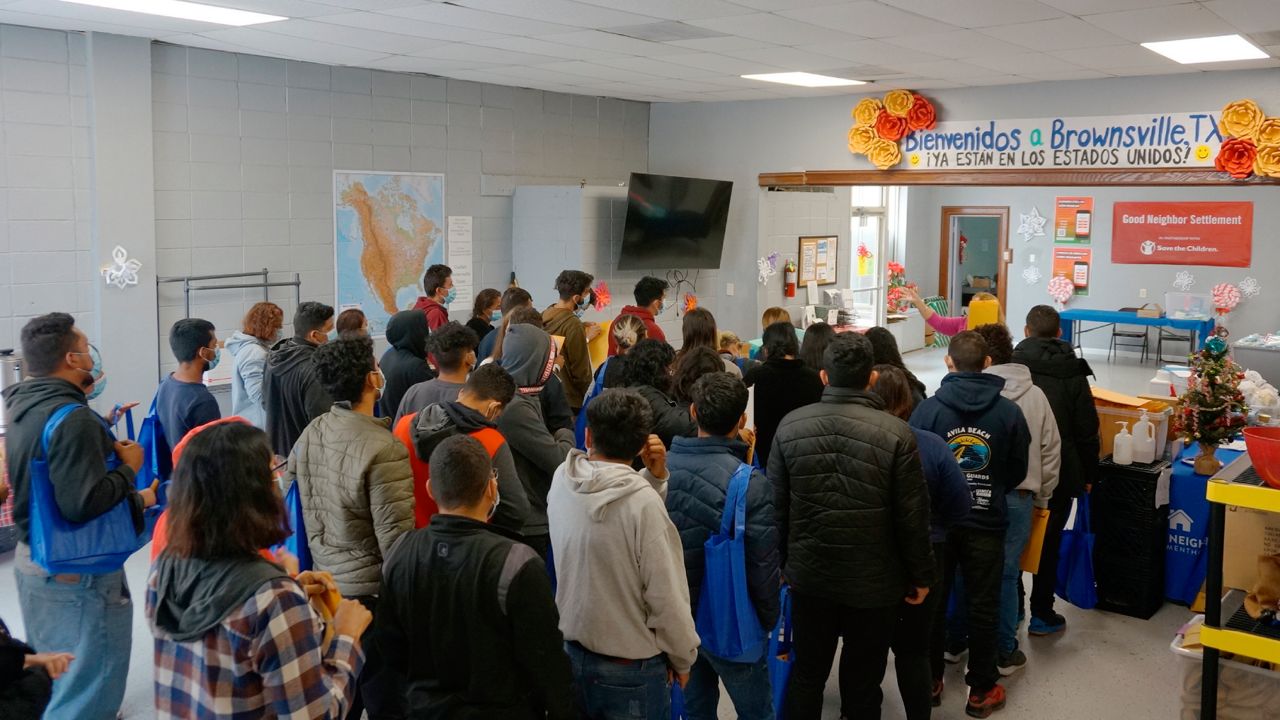EL PASO, Texas (AP) — Texas border cities were preparing Sunday for a surge of as many as 5,000 new migrants a day across the U.S.-Mexico border as pandemic-era immigration restrictions expire this week, setting in motion plans for providing emergency housing, food and other essentials.
El Paso County Judge Ricardo Samaniego told The Associated Press the region, home to one of the busiest border crossings in the country, was coordinating housing and relocation efforts with NGOs and other cities, as well as calling on the state and federal government for humanitarian help as they prepare for an onslaught of new arrivals once public health rule Title 42 ends on Wednesday.
The rule has been used to deter more than 2.5 million migrants from crossing since March 2020.
Temperatures in the region were set to drop below freezing this week, and on Sunday people wrapped in Red Cross blankets were seen walking near the airport.
On Saturday, El Paso Mayor Oscar Leeser issued a state of emergency declaration allowing the Texas border city access to additional local and state resources for building shelters and other urgently needed aid.
Samaniego said the order came one day after El Paso officials sent Texas Gov. Greg Abbott a letter requesting humanitarian assistance for the region, adding that the request was for resources to help tend to and relocate the newly arriving migrants, not additional security forces.
Samaniego said he has received no response to the request and plans to issue a similar county-wide emergency declaration specifying the kind of help the area needs if the city does not get state aid soon.
The City of El Paso announced Wednesday it received a new $6 million commitment from the Federal Emergency Management Agency, but Samaniego said the area is still short millions of dollars it needs to house and provide food and aid to the new arrivals. He urged the state and federal governments to provide the additional money.
“The strategy is in place, we know how to do this, all we need is the resources,” Samaniego said. “We do not need someone to determine how it is being done or how it is going to be done. We are one of the safest cities in the country. ...We are not asking for direction we are asking for resources.”
Samaniego said city and county officials have been working closely with NGOs to provide temporary housing for migrants while they are processed and given sponsors, as well help in relocating them to bigger cities where they can be flown or bussed to their final destinations.
City and county officials will join forces with NGOs at a one-stop emergency command center beginning Wednesday, Samaniego said. Similar command centers have been established previously for COVID-19 response and following the deadly 2019 Walmart shooting in El Paso.
Abbott and El Paso city officials did not immediately respond to requests for comment on Sunday.
Abbott has committed billions of dollars to “Operation Lone Star,” an unprecedented border security effort that has included bussing migrants to so-called sanctuary cities like New York, Los Angeles and Washington, D.C., as well as a massive presence of state troopers and National Guard along the Texas-Mexico border.
Additionally, the Republican Texas governor has pushed continued efforts to build former President Donald Trump’s wall using mostly private land along the Texas-Mexico border and crowdsourcing funds to help pay for it.
El Paso was the fifth-busiest of the Border Patrol’s nine sectors along the Mexico border as recently as March and suddenly became the most popular by far in October, jumping ahead of Del Rio, Texas, which itself had replaced Texas’ Rio Grande Valley as the busiest corridor at lightning-speed late last year.
The recent surge in El Paso – at first largely by Venezuelans and more recently among Nicaraguans – was reminiscent of a short period in 2019, when the westernmost reaches of Texas and eastern end of New Mexico were quickly overwhelmed with new arrivals from Cuba and Central America. El Paso had been a relatively sleepy area for illegal crossings for years.
It is unclear why El Paso has become such a powerful magnet, especially in September. Nicolas Palazzo, an attorney at Las Americas Immigrant Advocacy Center in El Paso, suspects that smugglers calculated it was a good place to run operations, echoing a widely held view. The Border Patrol, with limited capacity to move agents temporarily, has trouble keeping up.



